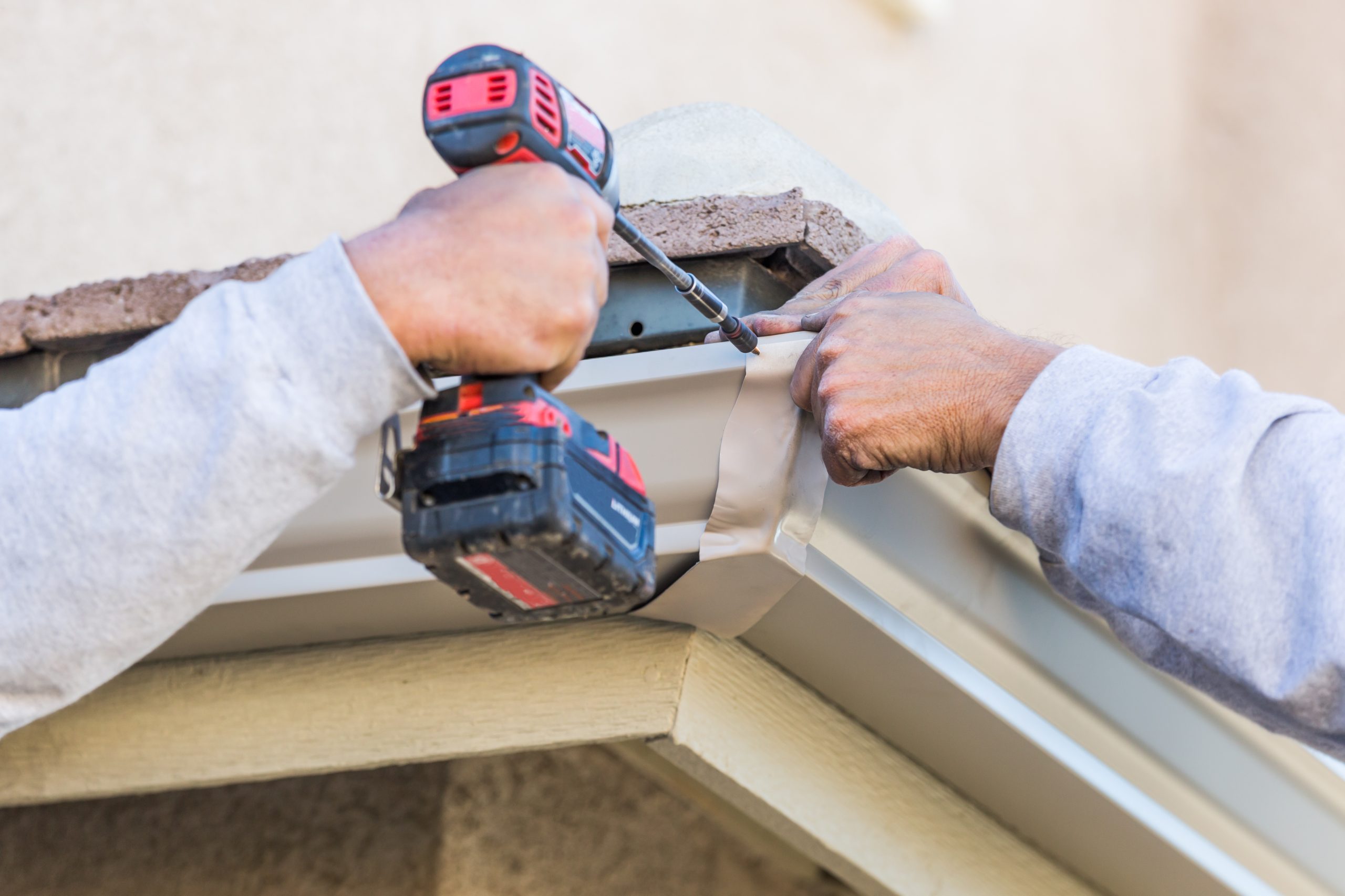Adapting Gutter Systems to Various Roof Types
Flat Roofs
Flat roofs, while not entirely flat, have a slight pitch to allow water drainage. For flat roofs, gutters must be carefully designed to manage water flow efficiently. Box gutters are a popular choice for flat roofs due to their high capacity and ability to handle large amounts of water. These gutters are integrated into the roof structure, making them less visible and providing a sleek appearance. Additionally, scuppers and downspouts are often used to ensure that water is effectively directed away from the building’s foundation.
Pitched Roofs
Pitched roofs, which are more common in residential buildings, require gutters that can handle the increased water runoff caused by the steep slope. K-style gutters are an excellent choice for pitched roofs because of their decorative appearance and high-water capacity. These gutters have a flat back that allows for easy mounting against the fascia board. For homes with very steep roofs, oversized gutters and downspouts may be necessary to handle the increased water flow and prevent overflow.
Gable Roofs
Gable roofs, characterized by their triangular shape, are straightforward in terms of gutter installation. The main consideration for gable roofs is ensuring that the gutters are adequately sized and properly sloped to direct water toward the downspouts. Seamless gutters are a good option for gable roofs because they reduce the risk of leaks and are custom fit to the roof’s dimensions.
Hip Roofs
Hips roofs, which have flops on all four sides, require a more strategic approach to gutter placement. Continuous gutters around the entire perimeter are necessary to manage water flow from multiple angles. Corner joints and splash guards are vital for preventing water overflow at the corners where the slopes meet. Additionally, multiple downspouts may be needed to ensure efficient water drainage.
Shed Roofs
Shed roofs, with their single slope, present a unique challenge in terms of gutter placement. The gutter system must be installed along the lower edge of the roof to capture all the runoff. Half-round gutters are a popular choice for shed roofs due to their traditional look and efficient water handling capabilities. Ensuring that the gutter is adequately sloped toward the downspout is essential to prevent water pooling and overflow.
Strategic Gutter Placement for Complex Roof Designs
Multi-Level Roofs
Complex, multi-level roofs, often found in larger homes or commercial buildings, require careful planning for gutter placement. Water from upper levels must be efficiently channeled to the lower levels without causing overflow or damage. Installing rain diverters or splash guards at the junctions where water flows from one level to another can help manage the water flow. Additionally, ensuring that downspouts are strategically placed to handle the cumulative water load from multiple roof sections is crucial.
Roof Valleys
Roof valleys, where two slopes meet, are areas particularly prone to high water flow and potential damage. Installing valley splash guards or diverters can help manage the increased water volume in these areas. Additionally, ensuring that the gutters near the valley are securely fastened and adequately sized to handle the water flow is essential to prevent overflow and water damage.
Architectural Features
Architectural features such as dormers, chimneys, and skylights can impact gutter placement and performance. Dormers, for instance, require their own gutter system to manage the water flow effectively. Ensuring that the gutters around these features are properly sealed and sloped is critical to preventing leaks and water damage. For chimneys and skylights, installing flashing and ensuring proper sealing can help direct water away from these features and into the main gutter system.
Conclusion
Understanding how roof architecture affects gutter choices is crucial for designing an effective water management system. Adapting gutter systems to various roof types, such as flat, pitched, gable, hip, and shed roofs, ensures that water is efficiently directed away from the building’s foundation. Additionally, strategic gutter placement for complex roof designs, including multi-level roofs and roof valleys, helps prevent water overflow and damage. By considering these factors, homeowners and builders can ensure that their gutter systems are both functional and aesthetically pleasing, providing long-lasting protection against water damage.

